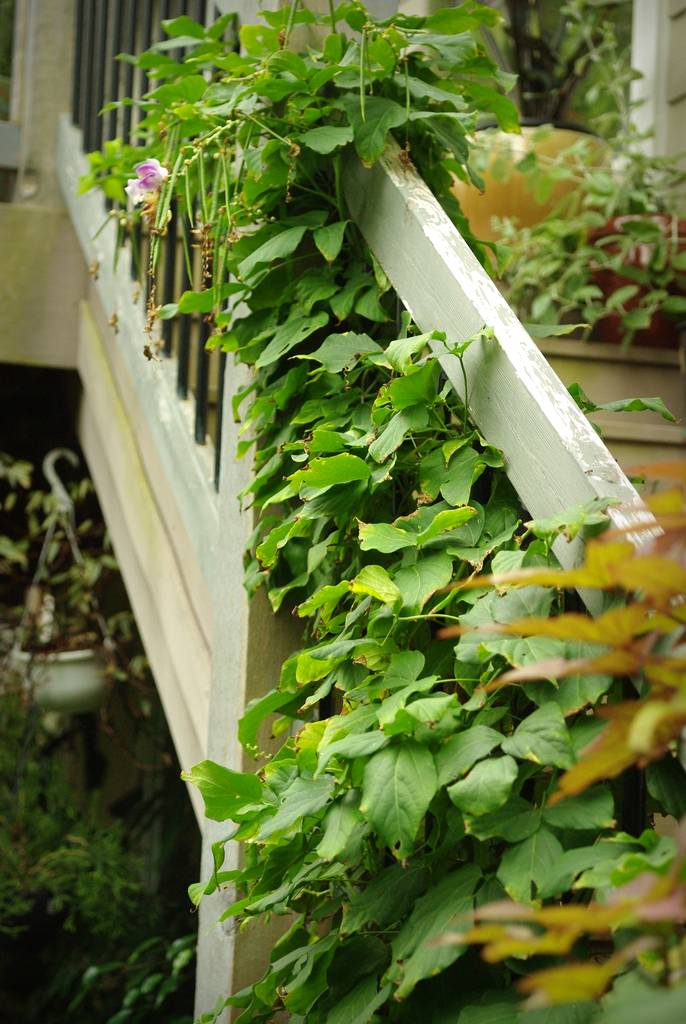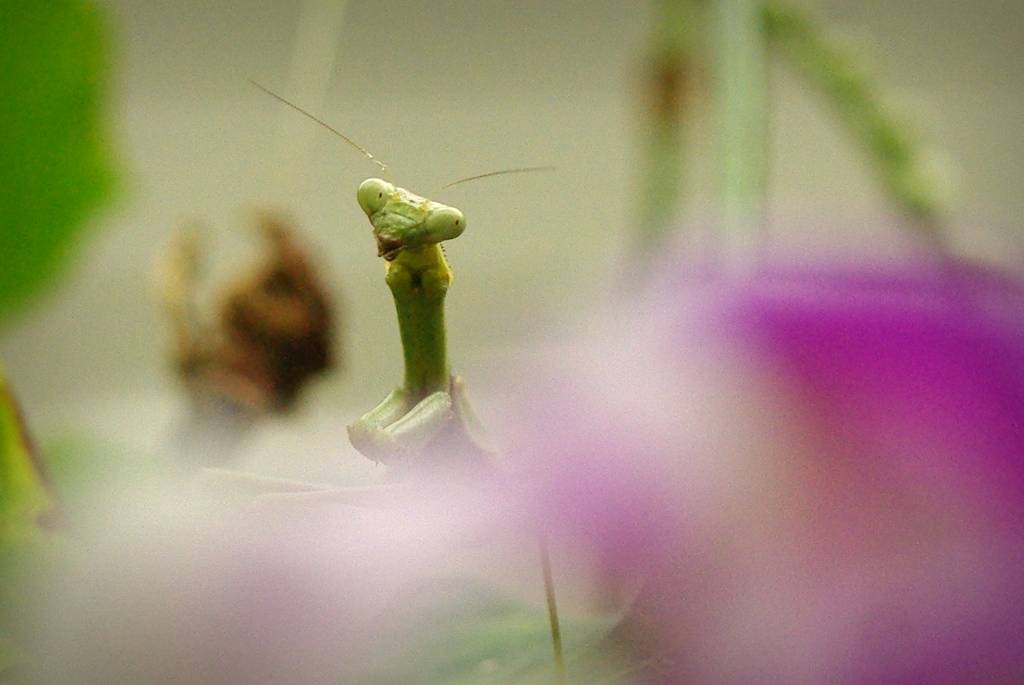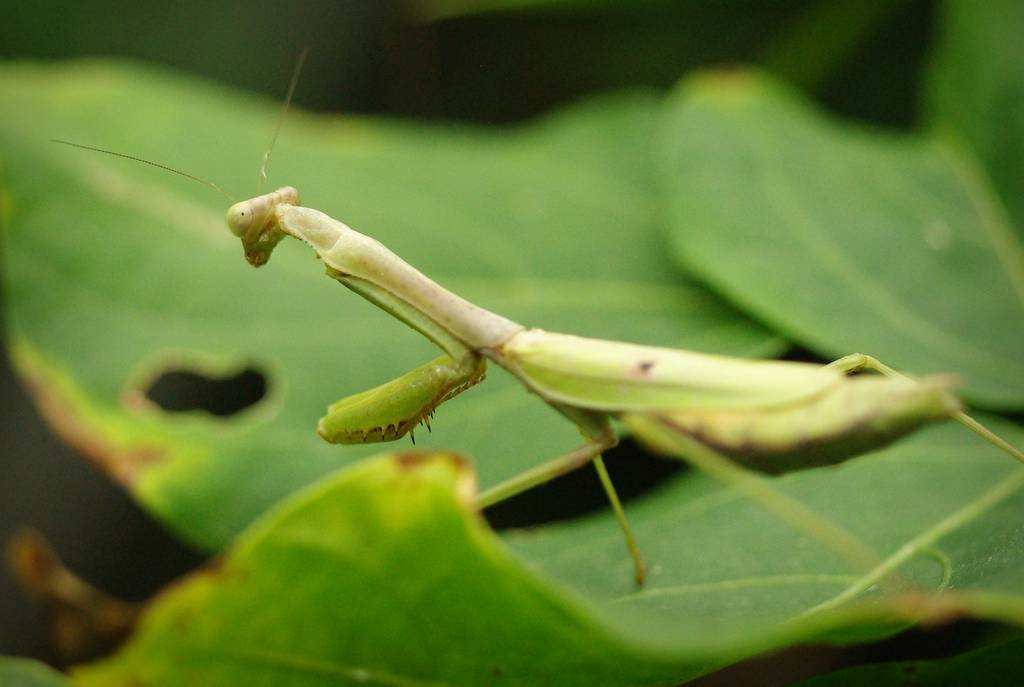Vigna caracalla
As you may know, I grow lots of different flowering vines. Annuals, cold-hardy perennials, tender perennials -- it's one of that last category that I want to look at today: Vigna caracalla.
This beauty forms clusters of wonderfully twisted, fragrant flowers usually starting in mid-summer until just about now. Let's take a look at what this plant is contributing to the garden right now.
The flowers are fading, but the vine is still beautiful, and surprising. Here it is in a wide shot:
Climbing up the deck railing, it's my favorite vine to use in this location. Thick foliage, late season blooms perfuming the air, habitat for creatures:
These big ants love whatever nectar the plant produces -- even when the flowers have fallen.
Oh, and since this vine grew up, over, and into the caramel-colored sweet potato vine while we were on our roadtrip this summer, the two are now joined -- I can't talk about the Vigna without showing the Ipomoea:
I don't want to get too distracted though, as I really want to show you something cool about the Vigna. Since this is perennial to zone 8 or 9 only (we're technically zone 6 here), I take cuttings every fall and grow them under lights all winter. They grow too large and/or get attacked by mealy bugs, but they survive well enough so I can plant them out in the spring -- I've had these in my garden for 4 or 5 years now.
This year though, I may have a backup plan to the cuttings:
I'm not sure if it's because the plant I put out this year was bigger, or if I put it out earlier, but there are dozens of seed pods this year!
Most of them are pretty small, but at least two have the potential to ripen before frost (fingers crossed):
It would be such a relief to me to have viable seeds in case my cuttings don't survive the winter -- sometimes when ordering this plant (or seeds) you'll get the all-purple form which may or may not be a different species entirely. It's not fragrant though, and to my eye not nearly as attractive.
So earlier I mentioned this being a habitat...
I find at least one mantis on it every year. This one had its eye on the bees that were buzzing around the last few flowers.
Okay, getting distracted again... back to the plant. One of its common names is "corkscrew vine", due probably to the spirally twisted nature of the blooms:
To me though, this is the confirmation of that name:
Want to learn more about this vine and see more photos? I wrote about it two years ago.
I'll let you know soon if any of these pods get a chance to ripen -- maybe I'll have some seeds to share!
.


















Wow, these are so beautiful. Hope you have good luck with those seed pods. I also saw your post about the hyacinth bean vine. They look beautiful too! Do you grow them from seed every year? Btw, re those beans edible?
The mantis always makes me smile - their faces look so curious!
Your praying mantis pictures are fascinating. Good work
Botanied: I don't know if either this or the hyacinth bean are edible -- I'm never going to try them! :)